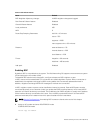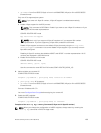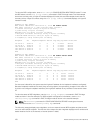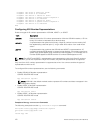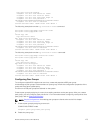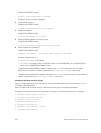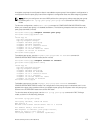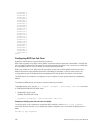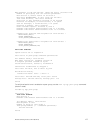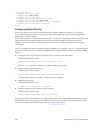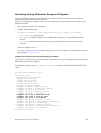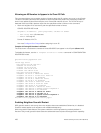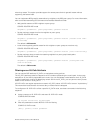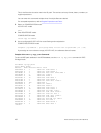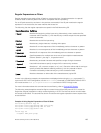
10.68.160.1
10.68.161.1
10.68.162.1
10.68.163.1
10.68.164.1
10.68.165.1
10.68.166.1
10.68.167.1
10.68.168.1
10.68.169.1
10.68.170.1
10.68.171.1
10.68.172.1
10.68.173.1
10.68.174.1
10.68.175.1
10.68.176.1
10.68.177.1
10.68.178.1
10.68.179.1
10.68.180.1
10.68.181.1
10.68.182.1
10.68.183.1
10.68.184.1
10.68.185.1
Dell>
Configuring BGP Fast Fail-Over
By default, a BGP session is governed by the hold time.
BGP routers typically carry large routing tables, so frequent session resets are not desirable. The BGP fast
fail-over feature reduces the convergence time while maintaining stability. The connection to a BGP peer
is immediately reset if a link to a directly connected external peer fails.
When you enable fail-over, BGP tracks IP reachability to the peer remote address and the peer local
address. Whenever either address becomes unreachable (for example, no active route exists in the
routing table for peer IPv6 destinations/local address), BGP brings down the session with the peer.
The BGP fast fail-over feature is configured on a per-neighbor or peer-group basis and is disabled by
default.
To enable the BGP fast fail-over feature, use the following command.
To disable fast fail-over, use the [no] neighbor [neighbor | peer-group] fail-over command
in CONFIGURATION ROUTER BGP mode.
• Enable BGP Fast Fail-Over.
CONFIG-ROUTER-BGP mode
neighbor {ip-address | peer-group-name} fail-over
Examples of Verifying that Fast Fail-Over is Enabled
To verify fast fail-over is enabled on a particular BGP neighbor, use the show ip bgp neighbors
command. Because fast fail-over is disabled by default, it appears only if it has been enabled (shown in
bold).
Dell#sh ip bgp neighbors
176
Border Gateway Protocol IPv4 (BGPv4)



